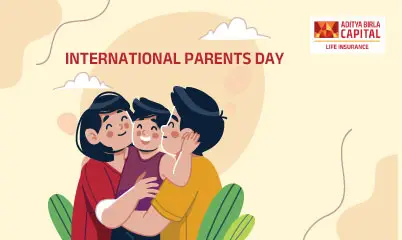
Give ₹ 1 lakh/ year for 10 years Get₹ 21.58 lakhs guaranteed benefits1
Child Plans
Why Should You Buy a Child Insurance Plan?
Investing in a child plan is a prudent decision to ensure your child’s future is secure, both educationally and financially, allowing them to achieve their dreams without monetary constraints.
Types of Child Insurance Plans
Features of Child Insurance Plans
These features make child insurance plans a comprehensive financial tool for securing your child’s future, providing both insurance coverage and investment growth opportunities.
Benefits of child protection plan insurance
Protect the important milestones in your child’s life
Money Back Plan to nurture your child’s passion.
How Does a Child Insurance Plan Work?
Understanding these mechanisms helps you effectively plan and utilize a child insurance plan, ensuring it aligns with your financial goals for your child’s future.
What are the Child Insurance Riders?
Why Should You Get Child Insurance Riders?
Incorporating riders into a child plan is a strategic way to ensure that your child’s needs are comprehensively covered, making it a robust financial tool for securing your child's future.
Eligibility Criteria for Child Insurance Plans
It's important for parents to review the eligibility criteria carefully to ensure they meet the requirements and that the policy meets their financial planning goals for their child’s future. Selecting the right plan early can maximize the benefits received and ensure the child is well-protected and supported as they grow.
List of Documents Required for Buying Children's Insurance Plans
These documents help the insurance company assess the risk and eligibility of the applicants, ensuring the policy terms are suitable for both the insurer and the insured.
Looking for Assistance?
Call us on our toll-free no. for quick response!
FAQs
Latest Life Insurance Articles
-
Disclaimer
* Tax benefits are subject to changes in tax laws. You are advised to consult your tax advisor for the same.
**Sec 10(10D) benefit is available subject to fulfilment of conditions specified therein
# Provided all due premiums are paid.
1 ABSLI Child’s Future Assured Plan. Plan option: Education & Marriage Milestone. Male | Age: 35 years | Policy term: 25 years | Premium paying term: 10 years | Education milestone benefit period: 3 yrs & Education assured benefit start term: 15 yrs | Marriage assured benefit start term: 25 years | Annualized premium: ₹1,00,000 (excluding tax) | Total Benefits Payout: Rs 21,58,664 [Education Milestone Payout: Rs 10,79,332 (policy year 15,16,17) and Marriage Milestone Payout: Rs 10,79,332 (policy year 25)] | Age of Child: 0 years, Child as a nominee | Sum assured multiple for marriage: 100%
2 ABSLI Vision Star Plan, age 30 years, male, sum assured Rs.50 lakhs, premium: Rs.936511/- (including GST) premium paying term 5 years, pay frequency: annual, Assured Payout Option: Policy option B, policy term:14 years, death benefit: Rs.92,22,000 lakhs, Bonus Type: Simple Reversionary.
ABSLI Vision Star Plan (UIN: 109N096V03) is a traditional participating life insurance plan. All terms & conditions are guaranteed throughout the policy term, except for the bonuses which would be declared at the end of each financial year. GST and any other applicable taxes will be added (extra) to your premium and levied as per extant tax laws. Some benefits are guaranteed and some benefits are variable with bonuses based on the future performance of the participating business and economic conditions. If your policy offers guaranteed returns then these will be clearly marked "guaranteed" in the illustration table on this page.
ABSLI Child Future Assured Plan (UIN: 109N124V01) is a non-linked non-participating individual life insurance savings plan. All terms & conditions are guaranteed throughout the policy term. GST and any other applicable taxes will be added (extra) to your premium and levied as per extant tax laws. An extra premium may be charged as per our then existing underwriting guidelines for substandard lives, smokers or people having hazardous occupations etc. The insurance cover for the life insured (including minors) will commence on the policy issue date.
In the Unit Linked Policy, the investment risk in the investment portfolio is borne by the Policyholder.
Linked Life insurance products are different from the traditional life insurance products and are subject to the risk factors.
Linked Insurance Products do not offer any liquidity during the first five years of the contract.
The policyholder will not be able to withdraw/surrender the monies invested in Linked Insurance Products completely or partially till the end of the fifth year from inception.
Please know the associated risks and the applicable charges, from your Insurance agent or the Intermediary or policy document. The premium paid in unit linked life insurance policies are subject to investment risk associated with equity markets and the unit price of the units may go up or down based on the performance of fund and factors influencing the capital market and the policyholder is responsible for his/her decisions. Tax benefits may be available as per prevailing tax laws. For more details on risk factors, terms and conditions please read sales brochure carefully before concluding the sale.
For further details regarding the above-mentioned rider, please refer to the respective rider brochure(s) available on our website.
ADV/7/23-24/1000






